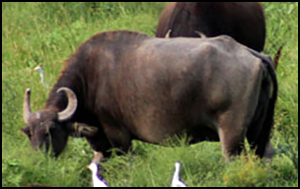Published online by Cambridge University Press: 05 August 2021

The expansion of the Umayyad and Abbasid Caliphates (seventh to ninth centuries AD) brought diverse regions from the Indus Valley to the Eurasian Steppe under hegemonic control. An overlooked aspect of this political process is the subsequent translocation of species across ecological zones. This article explores species introduction in the early Islamic world, presenting the first archaeological evidence for domestic water buffalo in the Caucasus—identified using zooarchaeological and ZooMS methods on material from the historical site of Bardhaʿa in Azerbaijan. We contextualise these finds with historical accounts to demonstrate the exploitation of medieval marginal zones and the effects of centralised social reorganisation upon species dispersal.